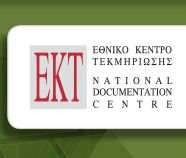3.1 Publications
The majority of the scientific publications were produced by “Universities”, “Public Health Institutions” and “Research Centers supervised by GSRT”. These were followed by “Technological Educational Institutes”, “Other Public Research Centres”, “Private Health Institutions”, “Other Public Institutions” and “Other Private Institutions”.
In detail, during 1996-2010, the category “Universities” was the top performing institution category –in terms of the number of publications–. Indeed, the great majority of Greek publications was produced with the participation of Universities. As a result, the annual change in the number of publications issued by Universities actually defined the change in the total number of Greek publications. Until 2010, Universities experienced a constant growth in their publications. In 2010, a small decline was observed and Universities produced fewer publications (9,302) compared to 2009 (9,534) (Figures 3.1.1 and 3.1.2).
“Public Health Institutions” are second in terms of the number of publications –with 1,612 publications in 2010–. Up to 2009, their publications followed an upward trend and started decreasing in 2010 (Figures 3.1.1 and 3.1.2).
The “Research Centres supervised by GSRT” were ranked third among the eight institution categories, producing 1,479 publications in 2010 and marking a steady increase since 2001 (Figure 3.1.1). It is worth mentioning that this category is the only one showing an increase in 2010 (Figures 3.1.1 and 3.1.2).
The publication output of “Technological Educational Institutes (TEI)” was lower –with 658 publications in 2010 (Figure 3.1.1)–. Since 2006, the category holded the 4th place among all institution categories. However until 2008, its growth rate was well above the average rate of Greek publications. In 2009 and 2010, TEI’ s publications were stable (Figures 3.1.1 and 3.1.2).
The category “Other Public Research Centres” includes 9 research institutions supervised by several Ministries. With a publication output of 390 publications in 2010, the category displayed a steady upward trend until 2009 and a decline in 2010 (Figures 3.1.1 and 3.1.2).
The publication output of “Private Health Institutions” varied with up-and-downs trhougout the period. Following 2008, we observed a negative change rate. In 2010, Private Health Institutions produced 267 publications (Figures 3.1.1 and 3.1.2).
Other Public and Private Institutions made a smaller contribution to the total publication output –e.g in 2010 accounted for 200 and 265 publications respectively (Figure 3.1.1)–.
Figure 3.1.3 shows the share of the total number of Greek publications* per each institution category for the latest five year period 2006-2010. Universities were ranked first with a share of 79%. They were followed by Public Health Institutions (14.3%), Research Centres supervised by GSRT (12%), Technological Educational Institutes (5.2%), Other Public Research Institutions (3.3%), Private Health Institutions (2.6%), Other Private Institutions (2.3%) and Other Public Institutions (1.7%).



















